









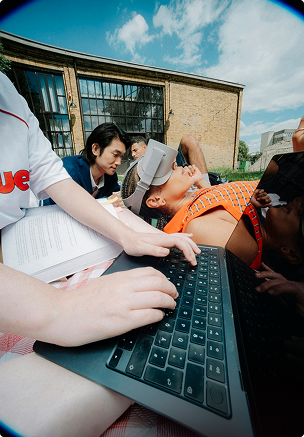

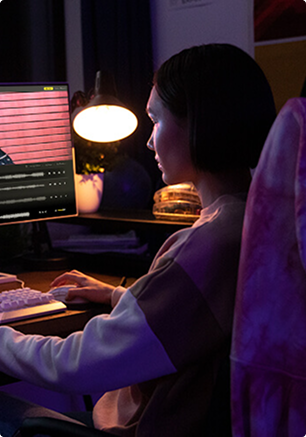

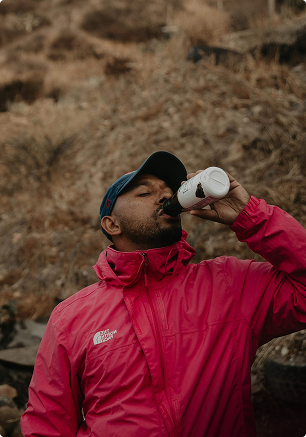
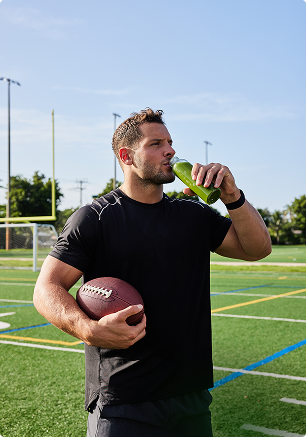







A recent Nielsen survey highlights the global balancing act: 72% of consumers expect local relevance, yet 68% still demand a consistent global experience.
For global brand and creative leaders, that means managing a dual challenge of expanding market share while protecting hard-won brand identity.
You’re on the right page to solve this issue.
This guide offers a practical roadmap to brand-safe localization and internationalization. You’ll learn how to:
Let’s dive in.
P.S. For more on scaling creativity without compromise, partner with Fieldtrip today.
Localization isn’t just translation; it’s where culture, marketing, and data-driven content creation meet to build customer trust across global audiences.
Localization means adapting content, campaigns, and product localization assets for regional needs while staying true to your global brand’s visual identity and brand guidelines.
A Unbabel study found that 84% of marketers say localization positively impacts revenue and 86% say it increases brand recognition.
Brands like Netflix show how market-specific adaptations can scale globally without diluting brand codes.
Pro tip: If your brand is also scaling campaign operations, check out our guide on Marketing Transformation for Fortune 500 Brands to see how global enterprises streamline creative and media execution across markets.
Considering that 72.1% of customers spend a significant amount of time on websites in their preferred language, investing in creative localization can increase your campaigns’ relevance and performance.
Brands that adapt product localization, digital marketing assets, and website content to local audiences see higher engagement and improved customer experience, ultimately driving business growth.
This approach improves customer experience and supports faster internationalization, ensuring consistent brand response across global landing pages and websites.
Follow these key steps to localize effectively: adapting creative for each market while keeping your core brand codes intact.
Define the core elements that make your brand unmistakable, so every localized asset reinforces, not rewrites, your global identity.
Brand codes are the visual, verbal, and sonic cues that make your brand instantly recognizable. They include tangible and intangible elements, like logos, color palettes, taglines, or even sound.
Your brand codes are what tie every market back to a single identity. And with 59% of consumers preferring brands to maintain a consistent identity, staying on target is vital.
Coca-Cola nails this balance: it uses the same red, script, and feel-good energy, which is just expressed in the local language.
Consistent brands see an increase in revenue of 23%, so auditing your brand's visual and verbal identity ensures you don’t miss out on revenue increases and that every market reflects your core identity.
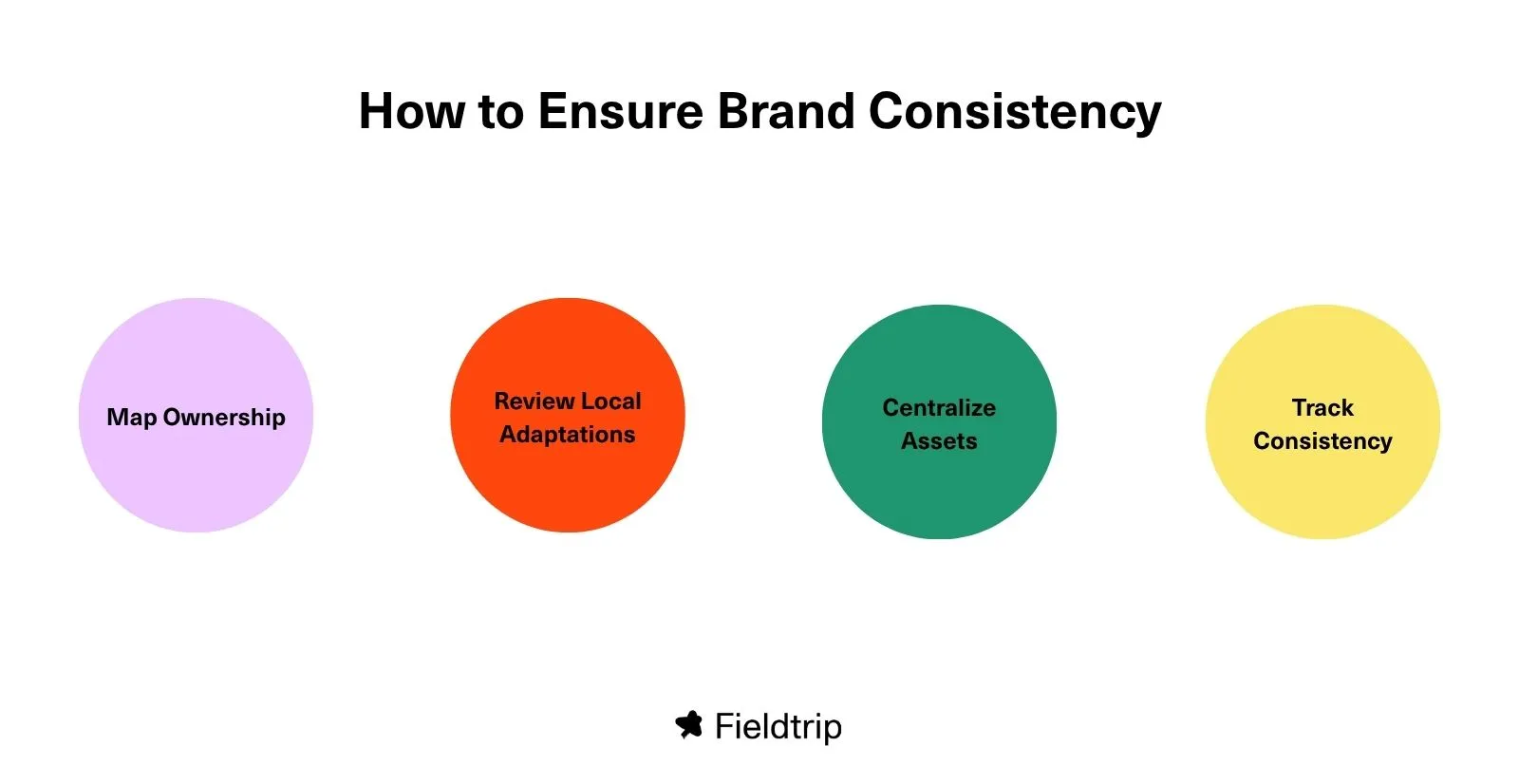
Start by mapping who owns each element: logo, color palette, typography, tone, and slogans across regions. Ensure you centralize assets in your digital asset management (DAM) or brand hub.
Insider tip: To track consistency and prevent off-brand drift, use analytics and metadata tags (e.g., “global-approved/local-variant”). Also, consider using Unicode-aware localization software to ensure brand fonts, icons, and scripts render consistently across markets and devices.
Then, review where your local teams adapt content.
Set a Localization North Star to Guide Global Consistency
Start by defining your non-negotiables. These are the brand codes, your logo, color palette, typography, and tone that should never change, no matter the market
Netflix exemplifies this well.
Its bold “N,” minimalist visual identity, and commitment to cultural localization stay intact across 190+ markets while adapting storytelling to local viewing preferences.
The streaming giant’s success also highlights how regional viewing preferences and cultural relevance can drive higher engagement when balanced with a unified brand design
For seamless creative localization, you must identify your core brand values and key elements that must remain consistent.
Start by understanding who your audience is by using surveys and focus groups to uncover regional tastes and get actionable insights.
Then figure out where to deploy creative while staying true to your global brand identity.
McDonald’s South Africa excels at this. Their localized menu shows they adapt their meals to local eating habits while keeping a consistent brand.
For example, the fast food giant introduced the Boerie Hashbrown Stack in South Africa, showing they understand that local consumers love meat and boerewors.
Think of your localization kit as the playbook that keeps your brand consistent everywhere.
It outlines what can be adapted, like tone or visuals, and what stays fixed, like your brand codes.
Brands like Airbnb do it well. The company gives local teams clear brand guidelines and freedom to adapt authentically.
Include approved glossaries and brand guidelines to help native speakers maintain tone and compliance with legal localization and regulatory standards in each region.
Equip your regional teams with trusted local designers and native speakers to adapt your visual identity, without changing your core logo, colors, and fonts, as these must remain constant.
According to template-design best practices, flexible asset layouts reduce localization rework and speed time-to-market.
These templates also streamline visual localization, ensuring images, typography, and symbols align with local relevance while following your brand consistency framework.
Take the brand Nike as an example: its “Nike By You” customization service and streamlined templates keep the Swoosh and tone intact while local markets adapt imagery and messaging for culture.
When adapting visuals for localization, tweak imagery, settings, or characters so they feel native, without losing your global look and feel. More on that next.
Color isn’t just visual; it's psychological, too. In fact, studies show consistent use of color can increase brand recall by up to 80%.
When you’re operating globally, understanding where a hue resonates and why it matters is key. For example, in the West, white suggests purity; in some parts of Asia, it’s linked to mourning.
Get this right and you protect your core visual identity, while tailoring how you show up in each market.
Your logos, typography, and color palette anchor your brand. What you should change are the imagery: photos, setting, and characters. So your local audiences feel you’re talking to them.

Brands like Nike do this well: they use globally consistent fonts and their Swoosh, with locally adapted visuals.
Define your core codes, give local teams and native creatives the tools and rules, and decide why each adaptation is needed. So you can localize your creatives authentically without losing brand codes.
When designing for a global audience, flexibility is everything. Your layouts and typography need to adapt easily without losing your brand’s feel.
Brands like Samsung roll out interfaces that use the same brand font and structure across markets. But they adjust text length, icons, and spacing for readability in each market (especially right-to-left languages).
Ensure you keep your visual identity consistent, while giving local teams room to fine-tune the details, not rebuild the design.
Your icons are your brand’s universal language, and they say a lot without words.
Apple, for example, keeps its icons sleek and visually consistent worldwide, whether on packaging, websites, or devices. There are only some minor visual adjustments for certain markets (e.g., regulatory icons). This consistency makes the brand instantly recognizable anywhere.
Keep your core icons fixed, but let your local teams decide how they show up across touchpoints like mobile, retail, or digital campaigns to stay culturally relevant.
Next, you’ll learn how to keep your brand voice consistent across markets so tone, emotion, and intent stay true, no matter the language or culture.
Transcreation reimagines your message so it carries the same emotion in a new market, not just the translated words.
It matters because transcreation preserves tone, feeling and brand promise across cultures.
Companies like Netflix excel here; they adapt entire user experiences, subtitles, and local-native storytelling so each market feels it was built just for them.
Writing copy isn’t just about language; it involves embodying culture, too.
Align your messaging with how your audience lives, what they value, and how they speak. That kind of relevance builds credibility and drives engagement across borders.
Brands that invest here fuel growth because they feel local, even when global (WARC Advisory and TikTok, 2024).
Build a shared resource consisting of glossaries, style guides, tone frameworks that your global and local teams use.
This keeps terminology, voice, and brand personality consistent, embodying your identity everywhere. Leading brands leverage these tools to maintain control while still enabling regional teams to deliver market-specific creative.
AI tools streamline localization, helping global teams adapt content faster while safeguarding brand consistency and tone across every market.
A Translation Management System (TMS) helps global teams manage content, track revisions, and keep every localized asset aligned with brand guidelines.
It connects workflows across markets, reducing duplication and improving quality control.
According to Lokalise’s 2023 report, The Revenue Impact of Localization, 46% of respondents believe AI will soon handle all localization workflows, showing that automation and TMS integration are essential for scaling efficiently across global markets.
P.S. You’ll need to provide your business email address to download and access the report
Machine translation (MT) can streamline localization, but only if you fine-tune it to your brand’s tone, terminology and voice.
By customizing MT engines with your brand’s style guide and glossary, you can preserve emotional consistency across markets.
A recent study found MT post-editing can cut localization costs by up to 40% (Alconost, 2025). For example, wellness e-commerce brand, Green Thumb, saw a 30% increase in international sales after using a customized MT-platform workflow.
Generative AI can enhance brand consistency and helps global teams scale creative work quickly without losing their brand codes.
The key is to lock in your core assets, logo, tone, and visual identity, before adapting for each market.
“AI can’t protect your brand if you don’t understand localization; it’s adapting ideas and tone for a new cultural ecosystem.”
Zalando proves this, using AI-assisted creative systems to create on-brand, trend-responsive visuals across 25+ European markets.
Speaking of AI and creative scale: Read our piece on Creative Testing & Measurement for Large Brands to see how top companies validate AI-generated content without compromising brand tone or quality.
Next, you’ll learn how to apply these safeguards to maintain your brand codes.
Localization should be baked into the creative from the start of your creative planning.
It’s vital to establish your global and local teams, what messaging, visuals, UX, and tone get adapted. As well as where it runs (be it social, digital, print, or OOH).

For instance, Airbnb revamped its global marketing model in 2018, shifting from simple translation in its creative planning to culture-first design, and saw an increase in engagement and revenue.
Your localization partners should do more than translate; they should think in your brand’s language.
To ensure alignment, evaluate agencies and vendors for brand-code fluency, not just linguistic expertise. The right partner understands your tone, visual identity, and core values.
Brands like LEGO succeed globally because their partners protect the brand’s playful yet precise DNA across every market; from packaging to digital campaigns.
Use this table as your audit guide and run a quick brand code checkpoint before every launch to catch inconsistencies early and keep your global identity intact.
Structured feedback from local teams, partners, and consumers helps reveal what resonates culturally and why.
You’ll need to capture those insights through localization analytics and feedback loops to ensure your learnings feed back into global strategy.
Aligning local discoveries with your brand codes strengthens identity across markets, making your brand both more consistent and more adaptable worldwide.
See how these top brands use cultural localization and strong visual identity to increase their digital marketing performance globally.
We partnered with NielsenIQ to drive global panelist acquisition in 20+ languages across Europe, North America, Latin America, and Southeast Asia, localizing creative and digital marketing assets to fit regional audiences while maintaining brand consistency.
The UGC-driven campaigns engaged 100+ creators monthly across 5+ digital acquisition channels, spanning 17+ countries with a $20M+ paid media budget.

KitKat is a standout example of cultural localization done right.
While maintaining its iconic red logo and core brand consistency, KitKat adapted its visual identity and product localization for Japan, introducing regional flavors from the lovely Matcha Green Tea to the subtle, floral Sakura Pink.
This blend of local creativity and global branding strengthened its cultural relevance and market share across Asia.
Pro tip: When local insights inform global planning, you’ll want an agency partner who understands both scale and nuance. Our list of Top Advertising Agencies for Global Brands can help you find the right fit.
Coca-Cola’s “Share a Coke” campaign is a masterclass in localization and personalization.
By replacing its logo with popular local names across 80+ markets, the brand maintained its signature red and script logo while adapting messaging to reflect cultural relevance in each region.

This simple yet powerful act boosted customer engagement and sales globally, proving that personal connection drives universal appeal.
Nike sets the standard for global brand consistency through its data-driven, iterative campaign model.
Each regional rollout refines creative and messaging using localization analytics while preserving Nike’s unmistakable visual identity: the Swoosh, bold typography, and motivational tone.
From localized storytelling in Seoul to athlete-led narratives in São Paulo, Nike proves you can tailor creative for culture without losing your brand’s global voice.
For global brands and creative teams, success isn’t just about perfect translations. It’s about how strongly your message resonates across cultures.
Start by defining what success looks like. Set KPIs that capture both creative performance and brand perception, like recall, engagement, brand lift, and sales impact.
Use localization analytics to measure where your content performs best and why certain messages resonate regionally.
For global brand and marketing leads, tracking who drives engagement, local creators, channels, or markets, helps refine how you scale campaigns while keeping brand consistency intact.
Identifying what truly drives local engagement is key. Use focus groups, customer surveys, and social listening to uncover cultural nuances before creative development.
Tools like Google Trends and localization analytics, like Lokalise, reveal where conversations differ and why certain messages resonate.
For global brand and creative leads, involving your local market teams and native speakers ensures your campaigns land authentically without diluting global brand consistency.
Use real-time analytics and A/B testing to see what creative versions perform best, where engagement peaks, and why certain messages resonate.
According to the IJSAT (2023), analytics improve localization precision and campaign performance, supporting the need for using real-time analytics and A/B testing.
For global brand and creative leads, this means empowering regional teams to adjust creative in-market while protecting core brand integrity and global consistency.
Global brands win when they adapt locally without losing what makes them instantly recognizable.
Continuous optimization powered by real-time analytics, local feedback loops, and close collaboration with in-market teams keeps creative relevant while protecting your brand’s DNA.
A Clear Channel and JCDecaux study shows 81% of consumers say they only buy from brands they genuinely trust, a reminder to prioritize trust when localizing creative.
For global marketing and creative leaders, it’s about finding the right balance; knowing how to adapt and staying true to your brand.
Partner with Fieldtrip to translate your brand’s vision into locally resonant creative that stays unmistakably yours, everywhere.
Brand codes are the enduring visual, verbal, and sonic markers that define a brand’s identity, such as a logo, color palette, or tone of voice. They matter because they build recognisability and trust across global campaigns, supporting brand consistency and driving loyalty.
Localizing an image means adapting visuals, such as color, objects, or context, to align with local culture while preserving core brand assets. It ensures your content resonates with regional audiences without diluting brand identity.
Cultural nuances, like symbols, colors, and gestures, can change how audiences interpret your creatives, affecting both engagement and brand perception. Effective localization strikes the right balance by feeling locally relevant while still staying true to your global brand.
Maintain your brand codes (logo, color, tone) as non-negotiable while allowing local teams to adapt context, imagery, and messages using a strong localization kit and governance framework. This approach protects your core identity across markets and campaigns.